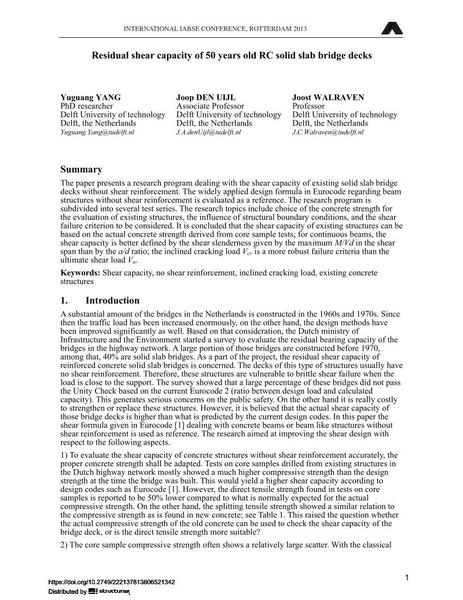Residual shear capacity of 50 years old RC solid slab bridge decks

|
|
|||||||||||
Bibliographic Details
| Author(s): |
Yuguang Yang
Joop den Uijl Joost Walraven |
||||
|---|---|---|---|---|---|
| Medium: | conference paper | ||||
| Language(s): | English | ||||
| Conference: | IABSE Conference: Assessment, Upgrading and Refurbishment of Infrastructures, Rotterdam, The Netherlands, 6-8 May 2013 | ||||
| Published in: | IABSE Conference, Rotterdam, May 2013 | ||||
|
|||||
| Page(s): | 538-539 | ||||
| Total no. of pages: | 8 | ||||
| Year: | 2013 | ||||
| DOI: | 10.2749/222137813806521342 | ||||
| Abstract: |
The paper presents a research program dealing with the shear capacity of existing solid slab bridge decks without shear reinforcement. The widely applied design formula in Eurocode regarding beam structures without shear reinforcement is evaluated as a reference. The research program is subdivided into several test series. The research topics include choice of the concrete strength for the evaluation of existing structures, the influence of structural boundary conditions, and the shear failure criterion to be considered. It is concluded that the shear capacity of existing structures can be based on the actual concrete strength derived from core sample tests; for continuous beams, the shear capacity is better defined by the shear slenderness given by the maximum M/Vd in the shear span than by the a/d ratio; the inclined cracking load Vcr is a more robust failure criteria than the ultimate shear load Vu. |
||||
| Keywords: |
shear capacity no shear reinforcement inclined cracking load existing concrete structures
|
||||
